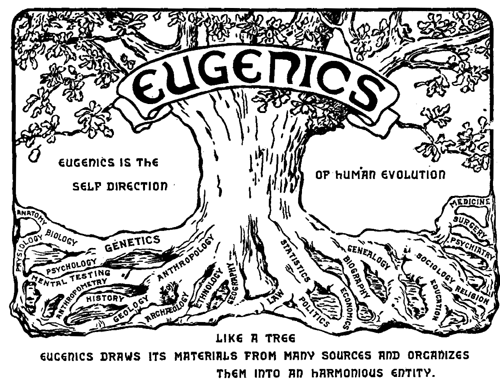theme: eugenics
theme: eugenics
The Second International Exhibition of Eugenics
1921

Harry H. Laughlin, The Second International Exhibition of Eugenics held September 22 to October 22, 1921, in connection with the Second International Congress of Eugenics in the American Museum of Natural History, New York (Baltimore: William & Wilkins Co., 1923). [image: Wikimedia Commons]
the eugenists themselves developed a body of knowledge of direct eugenic relevance. Much of this has become integrated into modern science. Eugenists played the crucial role in the development of mathematical statistics in Britain, through the work of Francis Galton, Karl Pearson and their collaborators, and their ideas informed much early work in genetics.
(MacKenzie, 1976)Social position, [eugenists] argued, was largely the result of individual qualities such as mental ability, predisposition to sickness or health, or moral tendency. These qualities were inherited, and thus a rough equation could be drawn between social standing and hereditary worth. On this basis a programme of social action to improve the quality of the population was put forward. Central to this was the alteration of the relative birth-rate (or survival rate) of the ‘fit’ and ‘unfit’. Those with good hereditary qualities should marry with care and have large numbers of children (this came to be called positive eugenics), while those with hereditary disabilities should be discouraged from parenthood (negative eugenics).
(MacKenzie, 1976)MacKenzie, D. (1976) ‘Eugenics in Britain’, Social Studies of Science, 6(3/4), pp. 499–532. [link]
theme: eugenics
theme: eugenics